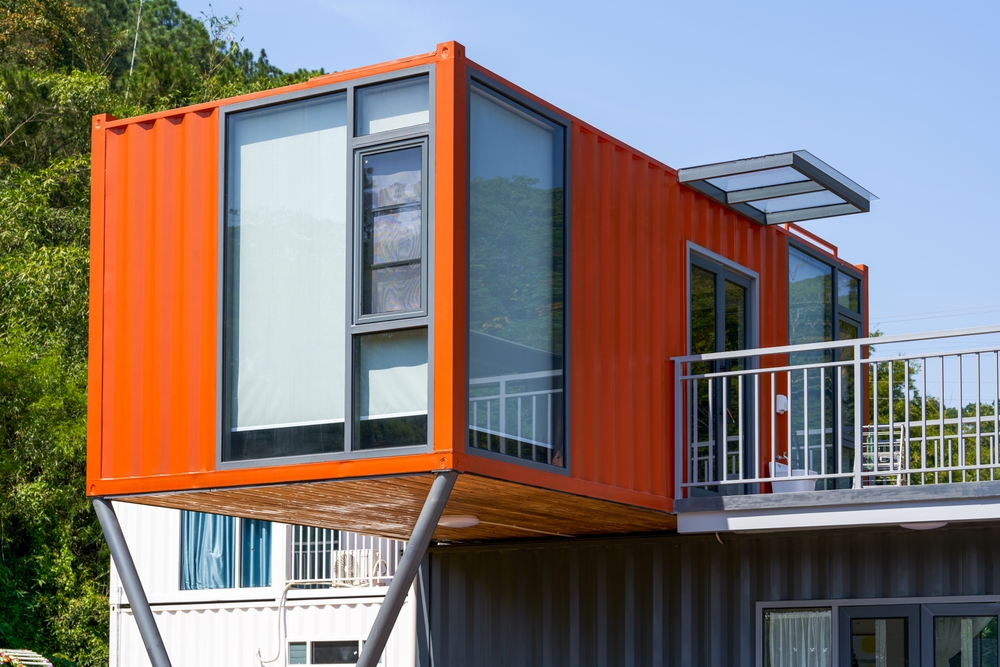Container Homes: A Sustainable Living Solution
Table of contents
- Introduction to Container Homes
- Benefits of Container Homes
- Environmental Impact of Container Homes
- Cost-Effectiveness of Container Homes
- Design and Style Options for Container Homes
- Challenges and Considerations of Container Homes
- Conclusion: Embracing Container Homes for Sustainable Living
- FAQs about Container Homes

Introduction to Container Homes
Container homes are rapidly gaining popularity as an innovative solution for sustainable living. These unique homes are fashioned from repurposed shipping containers, offering an eco-friendly alternative to traditional housing. With growing environmental concerns, the demand for sustainable living solutions has never been higher. Container homes are not only cost-effective but also promote recycling and reduced carbon footprints.
The concept of container homes started as an experiment but quickly evolved into a mainstream architectural trend. These homes are constructed from used shipping containers, which are abundant due to global trade. By repurposing these containers, it minimizes waste and gives these massive metal structures a new life. The trend aligns well with the rising sustainable living movement that emphasizes resource efficiency and environmental stewardship.
Benefits of Container Homes
One of the main benefits of container homes is their sustainability. By using existing materials, they significantly reduce building costs and waste. This makes them accessible to a wider range of people looking for affordable housing solutions. Moreover, container homes are incredibly durable, designed to withstand the harsh conditions of ocean travel, making them ideal for building sturdy residences.
Container homes offer flexibility in design and construction. Since they are modular, containers can be easily stacked or arranged in various configurations to suit personal preferences or site restrictions. This adaptability makes them suitable for both small, single-story dwellings and larger, multi-level homes, catering to diverse living needs. Additionally, their compactness often results in lower utility costs, adding to their appeal as an economical housing choice.
Environmental Impact of Container Homes
The environmental impact of container homes is another reason they are favored in sustainable living. Traditional construction significantly contributes to environmental degradation, consuming large amounts of resources and energy. In contrast, container homes repurpose existing materials, reducing the demand for new resources. This practice helps in conserving raw materials and decreases the overall carbon footprint.
Furthermore, the construction process for container homes typically requires less energy and time compared to conventional methods. The reduced construction time and material usage translate into decreased emissions and pollution, making container homes a cleaner choice for the planet. This efficient process aligns with the principles of sustainable architecture, focusing on minimizing environmental impact while maximizing energy efficiency.
Cost-Effectiveness of Container Homes
Container homes are a cost-effective alternative to traditional housing. The primary cost advantage arises from the use of pre-existing shipping containers, which are often more affordable than conventional building materials. Additionally, these homes can be built in a shorter time frame, further reducing labor costs and construction expenses.
The simplified construction process leads to savings that can be passed on to homeowners. Additionally, since container homes are typically smaller than conventional houses, they encourage minimalism, leading to reduced spending on furnishings and home maintenance. As utility costs are also lower due to efficient design and insulation, homeowners can enjoy substantial long-term savings, making container homes an attractive option for those on a budget.
Design and Style Options for Container Homes
Despite their industrial origin, container homes can be transformed into stylish and comfortable living spaces. With the right design elements, they can match or even surpass conventional homes in aesthetic appeal. Architects and designers worldwide are exploring innovative ways to enhance the appearance and functionality of these homes.
Interior spaces can be customized with various finishes and amenities, such as modern kitchens, cozy living areas, and luxurious bathrooms. Exteriors can be clad with different materials to blend with the surrounding environment or stand out with bold designs. The versatility of container homes allows for creativity and personalization, enabling homeowners to create unique spaces that reflect their individual tastes and lifestyles.
Challenges and Considerations of Container Homes
While container homes offer many advantages, there are challenges to consider. Insulation is essential to make these metal structures habitable in varying climates. Without proper insulation, containers can become extremely cold in winter and unbearably hot in summer. Selecting the right insulation materials and techniques is crucial to ensure comfort and energy efficiency.
Additionally, zoning and building codes can pose challenges. Not all areas permit the construction of container homes, and some may have specific requirements that need to be adhered to. It’s essential for prospective homeowners to research local regulations and seek professional advice during the planning stages to avoid any legal obstacles.
Conclusion: Embracing Container Homes for Sustainable Living
Container homes present a compelling solution for those seeking sustainable living options. They offer a unique combination of affordability, environmental benefits, and design flexibility. As more people become aware of the environmental impact of traditional construction, container homes will likely continue to rise in popularity.
By choosing a container home, individuals contribute to a more sustainable future, promoting resource conservation and environmental responsibility. Whether you’re intrigued by their cost-effectiveness or their eco-friendly nature, container homes provide an innovative pathway to sustainable living.
FAQs about Container Homes
- Are container homes durable? Yes, shipping containers are designed to withstand harsh conditions, making them extremely durable for housing purposes.
- How much do container homes cost? Costs vary based on size, location, and design, but they are generally more affordable than traditional homes.
- Can container homes be built anywhere? Not necessarily. Zoning laws and building codes vary by location, so it’s important to check local regulations.
- Are container homes energy efficient? With proper insulation and design, container homes can be very energy efficient, often resulting in lower utility costs.
- How long does it take to build a container home? Construction time is typically shorter than traditional homes, often taking just a few months depending on design complexity.








